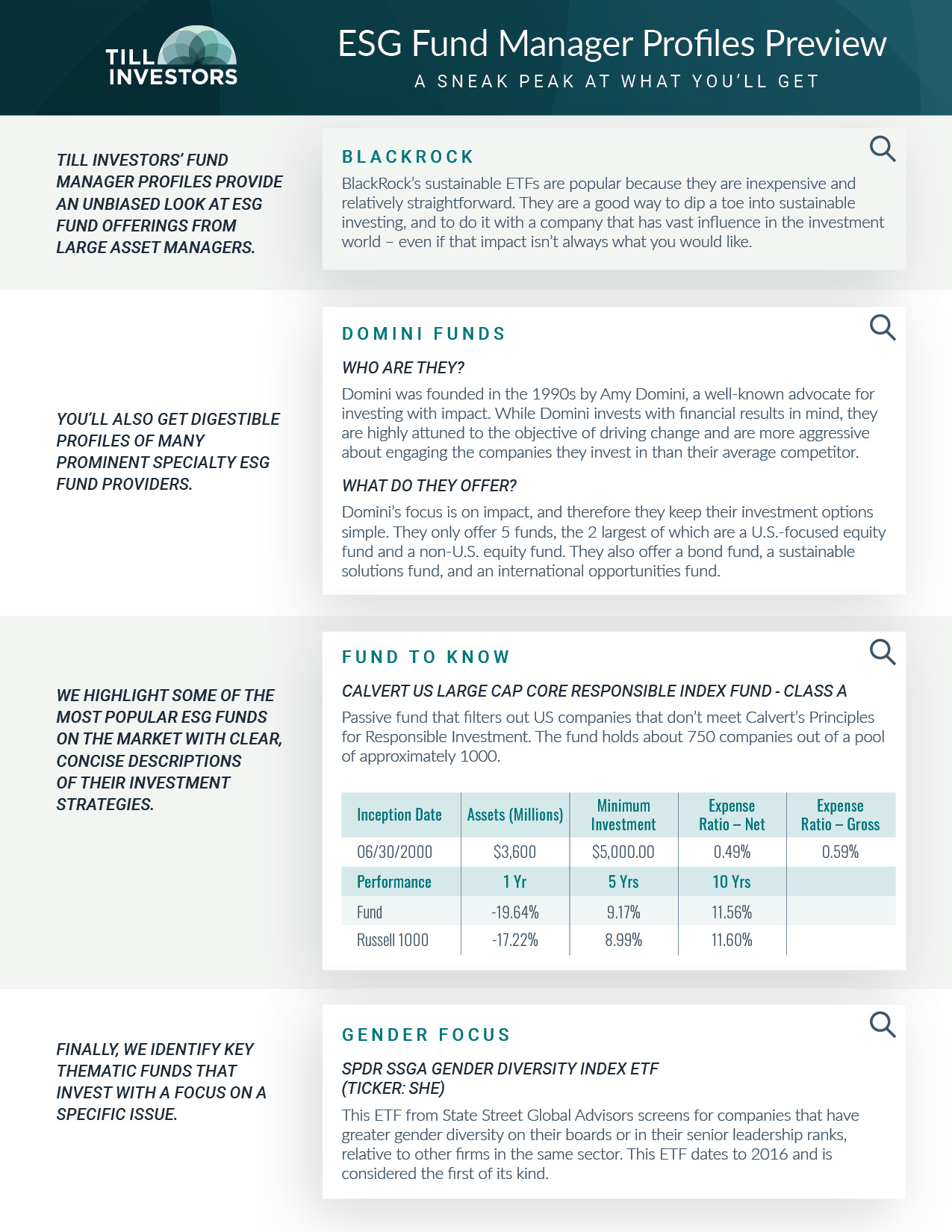
If you, like us, are concerned about climate change, the growing number of ways to fight it is encouraging. Recycling, solar, and electric vehicles – these all represent opportunities to act on your concerns and express your personal values. But there’s one more powerful way you can act against climate change, and that is through your investments.
Wherever your investment dollars are today, there are likely to be options you can choose that will contribute to the fight against climate change. “ESG funds” – These are funds that evaluate a company’s environmental, social, and governance impacts as well as financial matters – are becoming more common and more accessible to the average investor. And as a bonus, you don’t have to stick with just one approach. There are ESG funds you can use in your retirement plans and personal investments that fit your own “fighting style” – that is, the way you like to advocate for positive change. Here are three strategies you will find among ESG funds.
1. Avoid Fossil Fuels
Investors who use the avoiding fighting style are saying, “I don’t want to be part of the problem.” If you feel this way, you’re not alone. Many ESG fund managers broadly exclude traditional fossil fuel companies or other firms they believe are contributing to climate change problems. They tend to call this an exclusionary strategy.
This choice sets them apart from traditional funds. An S&P500 Index Fund, which invests in the largest 500 companies in the U.S. marketplace, will include numerous established oil and gas companies simply because they are large. Even broad U.S. equity funds that aren’t indexed usually contain a lot of fossil fuel firms because of their size and earning power.
2. Rewarding the Good Actors
The rewarding fighting style says, “I want to align with the companies that are contributing to positive change today.” A large number of ESG funds take this approach, which they call ESG integration. The idea is to use environmental data to score all companies in an industry, and then invest in whichever companies get the best scores.
Of course, the devil is in the details when it comes to who is selecting the data, which data they are looking at, and how good or complete the data is. Some fund companies are more thorough than others. But even if the rewarding fund is relatively lenient in its standards, it will still likely lead to a very different set of investments than you would get in a traditional U.S. equity fund. And investing in these funds sends an important signal – that you are looking for strategies that prioritize long-term sustainability over short-term profiteering in a dying industry.
3. Influencing the Market
Directly impacting the choices and policies of large corporations may seem out of reach to the average investor, but it’s not if you choose an influencing fighting style. Investors who opt for influence are saying, “I want my concerns about climate change to be heard and responded to by company leaders.” Mutual funds are increasingly taking up this challenge on behalf of their investors, a strategy they call engaging.
Funds and fund companies with strong engagement programs may or may not invest in fossil fuel companies. But they will be up in those companies’ business if they do. They may engage firms through regular meetings, research, or outreach efforts. But the real power of engagers is proxy voting.
All investors in any public company – and that includes you if you invest in a mutual fund – are allowed to vote on company directors and other key firm policies. Since you’re unlikely to show up to a shareholder meeting, they allow you to vote by proxy (either through a mail-in ballot, a phone system, or the internet). When you invest in a fund, the fund company votes on your behalf – and behalf of everyone else in the fund. So, a large fund commands a lot of votes, and that creates a lot of influence.
How Do I Invest in Climate-Focused Sustainable Funds?
Till Investors will be releasing a book in early 2023 that will include profiles of well-known ESG fund providers, including several that offer climate-oriented funds. You can stay up to date on book news by signing up for our newsletter at Tillinvestors.com. In the meantime, you can do your research on what kinds of climate funds are available through US SIF – a trade organization that provides a free screening tool for ESG funds. https://charts.ussif.org/mfpc/
We also recommend looking at the website fossilfreefunds.org, which is sponsored by the responsible investing advocacy organization As You Sow. Their tools can help you find funds that avoid fossil fuel investments while providing some deeper insight into the carbon exposure of almost any publicly available mutual fund, index fund, or exchange-traded fund.


